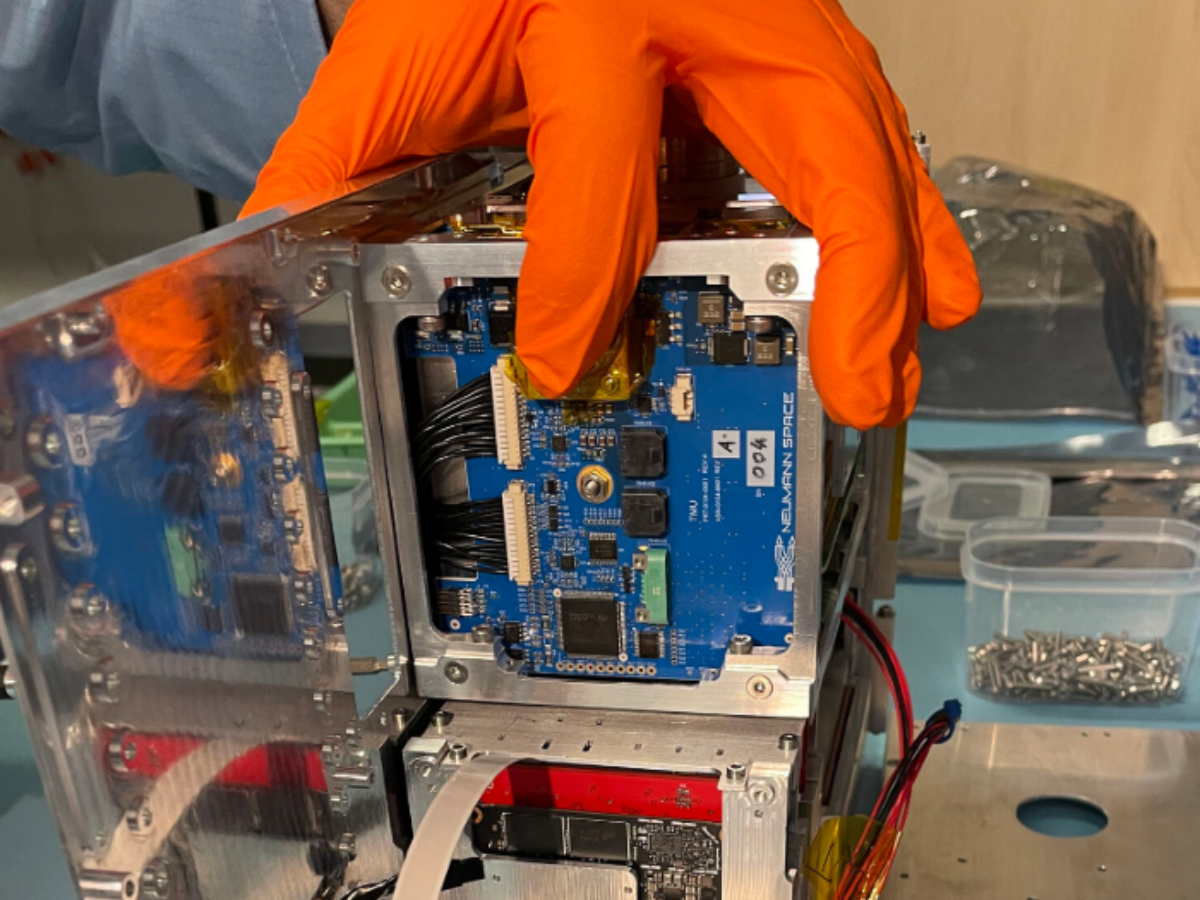The genuine Spirit of Australia heads towards orbit

The groundbreaking Australian-made Space Industry Responsive Intelligent Thermal (SpIRIT) nanosatellite has arrived in California for launch in November. This article, adapted from one from the Australian Space Agency, details the technology and the companies behind this achievement.
SpIRIT is a joint industry mission led by the University of Melbourne and supported by the Australian Space Agency. It is a research mission and a major opportunity to raise Australia’s profile in modern satellite operations.
The satellite will launch from Vandenberg Space Force Base on SpaceX’s Transporter-9. After launching, it will undergo four months of testing and commissioning before showing its capabilities to the world.
Head of the Australian Space Agency Enrico Palermo said the satellite is a showcase of Australian innovation and the maturity of the nation’s space industry.
“SpIRIT exemplifies the Australian space sector’s growing capability and readiness to collaborate with international partners.
“The Australian Space Agency is proud to back SpIRIT, and with new Australian technologies on board, this is an important demonstration of how we can contribute to international space programmes.”
Professor Michele Trenti, SpIRIT Principal Investigator, said it was exciting to show Australian technology in a shoebox-sized package weighing just 11.5 kg.
“There is a growing role for big science in smaller craft … in understanding the universe or relaying information around the world, several small satellites can be more competitive than one big one,” Professor Trenti said.
International collaboration
Alongside its Australian technology, SpIRIT will also be carrying payload for the Italian Space Agency (ASI). Its HERMES X-ray detector will scour the cosmos for black holes, by locating the high-energy gamma ray bursts linked to them.
Locals on board
The platform for SpIRIT is Inovor’s Apogee satellite bus – the first Australian-made turnkey satellite platform. Apogee features power, telemetry, attitude control, and spacecraft command and control systems in a modular structure.
Inovor CEO Matthew Tetlow said his company had equipped SpIRIT with Neumann Drive – a lightweight, high-efficiency solar-electric propulsion system. It uses solid metal as a fuel source and is scalable up to larger spacecraft.
Neumann Space CEO Herve Astier said the company is working towards capturing metal space debris in orbit to refuel the system.
Astier said: “Pioneering metal-based propulsion technology, the Neumann Drive contributes to in-orbit sustainability and paves the way for a future where our propulsion system can be refuelled in-situ from space debris.
“We’re delighted to be part of this mission, showcasing our propulsion system integrated into the Inovor platform.”
The University of Melbourne also has 3 innovations on board SpIRIT- an instrument temperature control system, an autonomous low-latency communications module, and a payload management system.
Support on the ground
Once SpIRIT launches, Nova Systems will give ground segment support from its Autonomous Intelligent Ground Station System near Peterborough, South Australia.
Sitael Australia also brings its systems engineering expertise to round out the consortium.
Picture: Australian Space Agency
Topics Analysis and Commentary Australian Space Agency Autonomous Intelligent Ground Station System enrico palermo Inovor Manufacturing News Matthew Tetlow nanosatellite Neumann Drive Neumann Space Nova Systems Professor Michele Trenti Sitael Australia space Space Industry Responsive Intelligent Thermal SpIRIT University of Melbourne
@aumanufacturing Sections
Analysis and Commentary Awards Defence Manufacturing News Podcast Technology Videos










